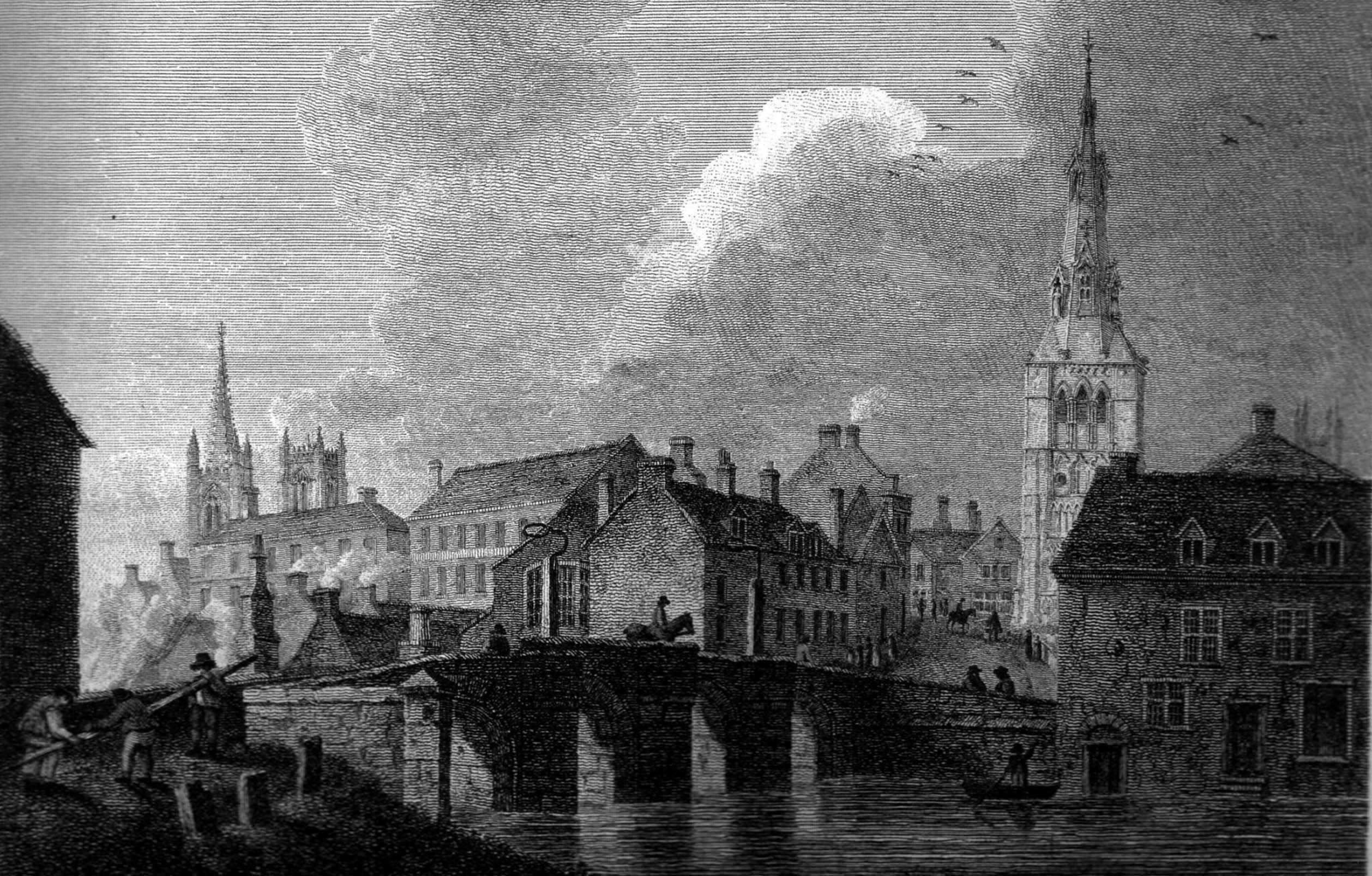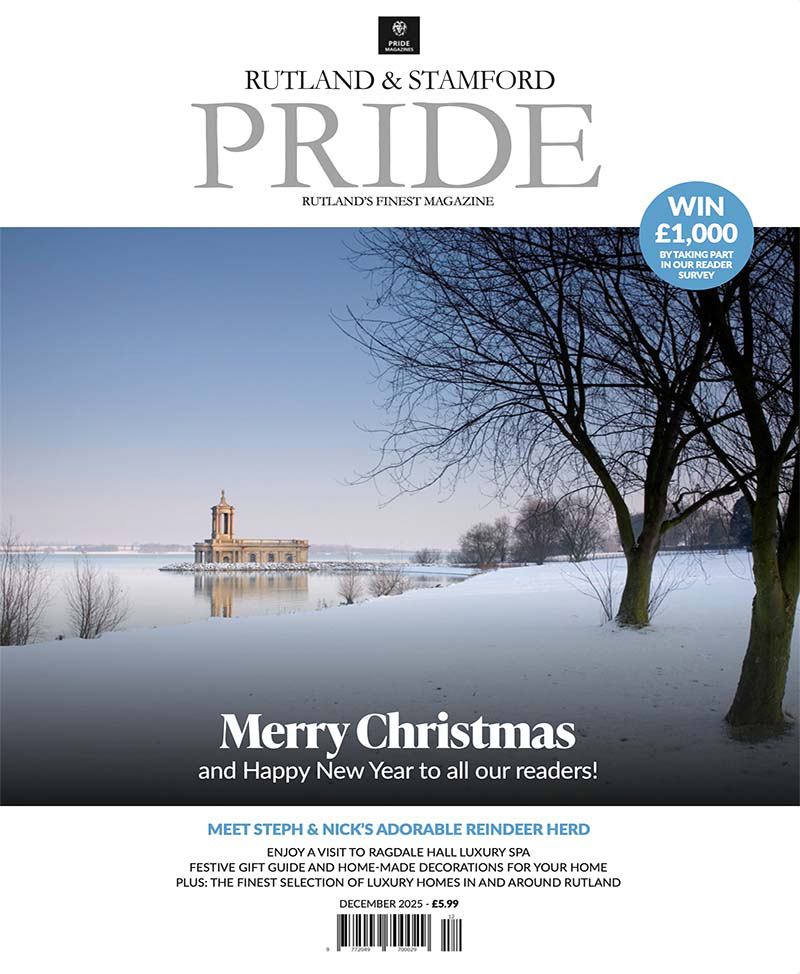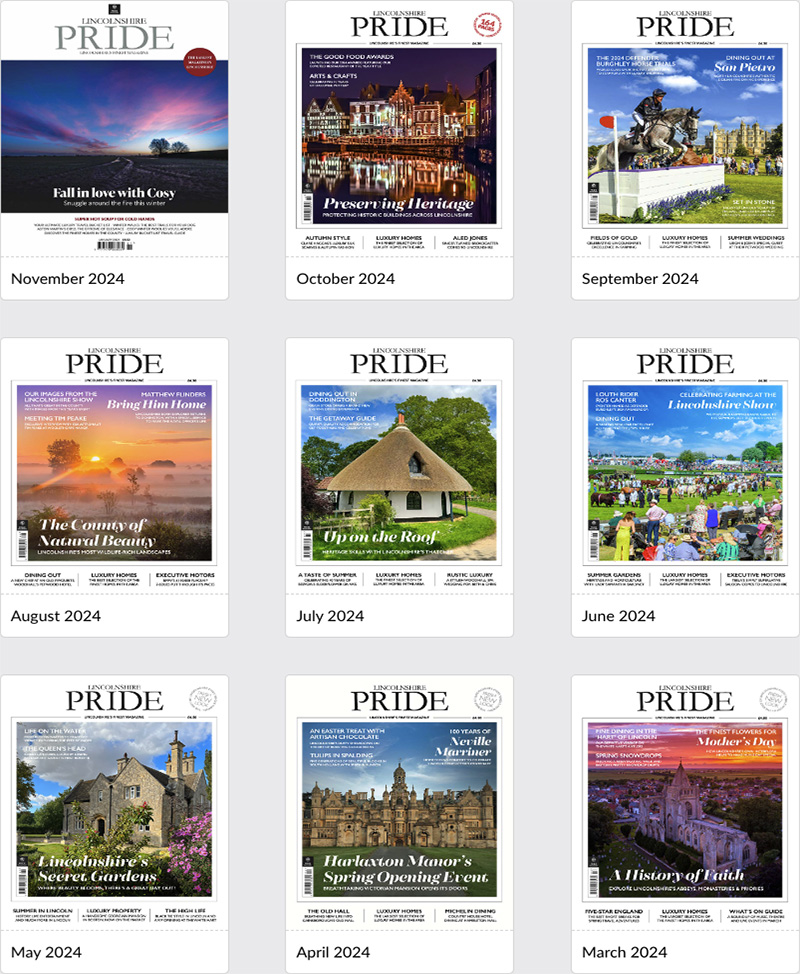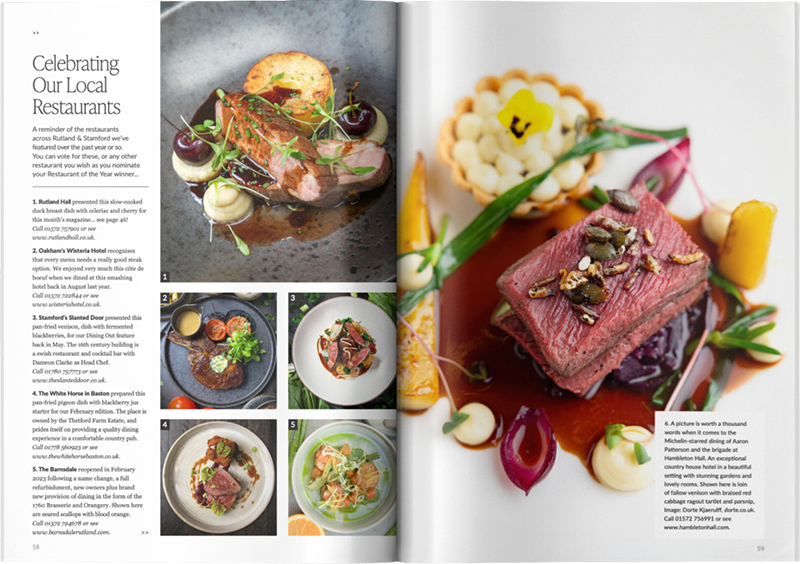
Pubs in Stamford
This month we’re raising a glass to an important part of Stamford’s history in the form of its coaching inns, alehouses, back street boozers and breweries. Its cultural and social history expressed in buildings, hops and barley is being retold by historian and author Martin Smith, who is making available an update of his book, Stamford Pubs & Breweries
Stamford has always been well-supplied with hostelries, being a town fortunately positioned on the Great North Road, through Stamford’s torturous medieval core from the twelfth century right up to the early 1960s. Kings, clergy, armies, travellers, traders, workers and entertainers all passed through its narrow streets on their journeys north, towards York and Scotland, and south to London.
In ages past, when journey times were considerably longer than today, some provided essential services to weary travellers, but Stamford also had a range of public houses used by tradesmen, market holders, carriers, entertainers, workers etc, and by the residents of the town. Many small hostelries only served their immediate locality.
We tend to use the terms pub, tavern, alehouse or inn interchangeably, but each has its own specific definition. Inns are large, often ancient, establishments offering accommodation, food and drink, stabling and rooms for business and social events. They evolved into hotels. A Stamford example is The George, which evolved out of a medieval hospital founded by Peterborough Abbey.
Ale houses are an early incarnation of the later public house. In medieval times an ale house was distinguished by a bush being hung outside to indicate that the brew was on sale. Public houses evolved as ale houses became regulated, licensed and more respectable.
Slipping out of colloquial use as a term, taverns originally served only wine, offered no accommodation and were common in urban areas. By the 19th century they were often called wine & spirits vaults, hence the popularity of ‘The Vaults’ as a name for a drinking establishment.
Gin & spirit houses became popular in the late 18th century. The gin house was an urban phenomenon, made famous in Hogarth’s print Gin Lane. Beer houses or shops sprang up too after the 1830 Beer Act which relaxed licensing laws. Many only lasted a few years. Stamford examples include Hit or Miss, King William VI and Jolly Brewer.
The Different Ages of Pubs and Inns
In the medieval era, Stamford’s inns like The George served kings, pilgrims and merchants on the Great North Road, while alehouses offered poorer-quality brews to locals. By the Tudor and Stuart periods, alehouses multiplied, while coaching inns grew more refined, serving the social elite.
Following the Restoration, coaching boomed; Stamford’s inns rebuilt grand courtyards for stagecoaches, and public houses began offering food and lodgings. In the Georgian age, pubs became commercial centres—hosting markets, political clubs and trade unions. The 1830 Beer Act sparked a surge in beerhouses, often modest, rowdy and working-class. But sadly, by the Victorian railway era, Stamford’s coaching trade collapsed, leading to many pub closures.
The Pubs & Inns of the Great North Road
The roar of traffic on the modern A1 is a reminder that the Great North Road used to run right through Stamford and with it came inns set up to cater for travellers and traders. Two old inns still survive in the form of The George and The Crown. However, there were once several more, with a concentration along the northern side of St Mary’s Street.
Wandering along there in the 16th century you would have had a choice of dining in either The Swan, The Angel or The Bull. Each was a large establishment and the former stable and service yard of The Bull still survives in the form of Stamford Walk – its front range became The Stamford Hotel, recently converted to apartments.
It is probable that what is now St Mary’s Vaults was also an early inn owned by Magdalen College in Oxford, while there is a mention of a King’s Inn, perhaps on St Mary’s Hill in 1388. Elsewhere, The Bell occupied the entire eastern side of Ironmonger Street and the central section still exists as an estate agents.
Stamford’s Popular High Street
The modern High Street is now a mix of shops and coffee houses. However, it was once home to several pubs serving shoppers, market goers and traders. The Black Swan (later Globe) at No. 8 had a fashionable red brick frontage and a grand earlier rear range onto Broad Street. The Red Lion served the butchers’ market area and was a venue for cock fighting in the late 18th century.
The Windmill was an old pub which was demolished along with adjoining properties in 1966 to make way for the modern range that houses Tesco. A tablet to Lady Wake, mother of Henry IV, was found inside. Other pubs included The Crown & Anchor, set up as a beer house in 1838, which stood opposite Tesco, and the Pineapple at No. 51 which was opened as a wine and spirits vaults in 1846.
Elsewhere in Stamford
Stamford’s outlying streets were once home to local hostelries which catered for local residents of the many courts and slums, as well as less prosperous carriers and travellers.
Some of these pubs were set up by the Whig (Liberal) opposition to the Tory dominance of the Cecils of Burghley House. The O’Brien Arms on St Paul’s Street was established by Stafford O’Brien as part of the 1812 election campaign, while The Rolt Arms on Scotgate supported John Rolt at the 1847 election, whose slogan was Rolt & Rail – this was a dig at the Cecil obstruction in putting in a main line railway.
Meanwhile over on St Leonard’s Street there was The Olive Branch, which in the 19th century was the headquarters of the bullards who ran the annual bull running, as well as street-specific stop runs. Some of these locals pubs continued into recent times and older readers may remember The White Swan/Punchbowl and Gateway Hotel on Scotgate, St Peter’s Inn on St Peter’s Street, The Albion/Otters Pocket on All Saints’ Street, The Dolphin on East Street, The Daniel Lambert on St Leonard’s Street and The General Gordon on Wharf Road.
Spirits in the Suburbs
Moving out from the historic centre we enter the suburbs, which have expanded in stages from the early 19th century. The earliest suburban pubs are those on the main routes in and out of the town.
These included The Drum & Monkey on Casterton Road, The Parting Pot/Victoria at No. 1 Ryhall Road and The Windmill on Tinwell Road, which was set up in the late 18th century by John Tallis who owned the nearby windmill.
The Hit or Miss was a small local beer house serving the New Town area around Foundry Road, while the King William IV was another beer house catering for the new northern suburbs around Bentley Street and Conduit Road. A later lost pub was The Northfields on Drift Road, which opened in 1957 for the new council estate residents.
Stamford Breweries
Originally inns and pubs would have had their own brewhouse, a concept which evolved from the original medieval ale house. Brewing began to become more corporate during the 18th century and the number of dedicated breweries in the town reached a peak in the later 19th century.
By the 20th century, brewing became more centralised, with large regional and national concerns buying up and closing down small town breweries.
Water Street in St Martin’s had a concentration of breweries from access to a good water supply. These included St Martin’s, later Phillips, which was the first common brewery in the town, set up in 1780, and Harper, Hunt & Edward’s (later Hunt’s) established in the early 19th century.
Other lost breweries included Lowe, Son & Cobbold, off Broad Street; Jelley’s or Hewitt’s which was located at the back of the former Bell on Ironmonger Street, and St George’s brewery on Wharf Road, opened as part of the 1830 Beer Act.
The All Saints Brewery, which became Melbourne’s, stood more centrally in the town and was until recently open as a museum – it is currently closed, along with St Mary’s Vaults, as a result of the mystifying business etiquette of its owner, Samuel Smith.
Traditional Pub Games
If you’re keen to pass the time and simply staring into a pint glass isn’t cutting it, fear not. Historically there have been plenty of pub pastimes to keep you occupied…
1. Shove Ha’penny: Dating back as early as the C15th in its shoffe-grote incarnation, also known as shovel board and slide thrift, more modern shove ha’penny boards were created circa 1840, with players required to slide their coin into different areas of a board.
2. Skittles: Also known as nine pins, Dutch pins or rolly polly and even Aunt Sally, recorded as far back as the C14th, when a ‘cheese’ was rolled towards skittles.
3. Toad in the Hole: Also known at pitch penny or throwing disks, sapo, chuck farthing or rana, where the object of the game was to toss a penny into a hole from a distance.
4. Dwile Flonking: Also known as nurdling, some poor fellow in a circle is the flonker, hit by beer stained fabric strips by opponents(!).
5. Billiards/Snooker: The former originated in France in the C14th, evolving into bar billiards in the C19th. The game was modified by Sir Neville Chamberlain, a British Army officer stationed in Jabalpur, India in 1875 and became snooker, with competitions held in pubs from the 1930s
6. Dominoes: Originating in China in the C12th before reaching Europe in the C18th.
Meet the Landlord
“The world has changed a great deal in a very short space of time,” says Michael Thurlby. It does sound like the pseudo-philosophical thing you’d hear in a pub, discussing the vast intricacies of life over a pint, but in fairness, Michael and his teams are best-placed to see the differences he’s witnessed over the bar, even since Covid.
Michael has a long and glorious history of renovating and running pubs and hotels in Stamford, having purchased the Periwig in 1997 renovating it several times and reinstating the Patens name in 1997. He and partner Sophia restored The Crown in 1999 and most recently they purchased the Tobie Norris, a former RAFA-club, in 2007.
“Right up to the 1970s and 1980s, pubs used to be about drinking, they were places for men, they were places to smoke… they were simpler businesses to run too.”
“It’s great that pubs are more welcoming now, more family friendly. Heavy drinking seems to be a culture in decline, pubs are much more inclusive now.”
“Overall I reckon we’re seeing the same number of people through the doors, but today, that trade is just as reliant on food as drink, and that custom is not just during the evening but for brunch, morning coffee, lunch and afternoon meet-ups as well as evening dining and drinks.”
“You wouldn’t dream of buying a pub or an inn now unless there was a very good outdoor space for families, and pubs now also need to be dog-friendly, too.”
“At the same time as the number and range of different customers has increased, so too has expectations. Today, you can’t serve poor food, not with so much competition around.”
“Expectations are high and to produce proper food you need at least two really good chefs – ones that stick around and allow you to maintain the consistency and quality of your food. With front of house staff and kitchen porters, the wage bill when you’re offering food is much higher. And that brings us on to staffing costs.”
“Increased minimum wage, higher National Insurance contributions and business rates mean it’s more difficult than ever to keep costs down for customers. I was speaking to the owner of a lovely traditional pub in Covent Garden who is in the process of closing the business, stating that they could survive Covid, but they can’t survive a Labour government. And that’s in an affluent part of London with lots of tourist trade.”
“Younger people appear to be drinking less and going to the gym more, everyone’s more health-aware today and drinking (especially drinking to excess) is less about what pubs and inns are all about today. What hasn’t changed though – and I hope it never does – is the interaction with customers. I always make a point of talking to people and making sure everyone receives a warm welcome. That part of the job has always been a pleasure.”
“We’re very lucky as Stamford is a town where people value independent businesses, and where independents happily coexist with multinationals – Wetherspoons’ Stamford Post and the Cosy Club, in our case. We’ve a mixed customer base who are very loyal and who appreciate quality. It’s a fantastic place to run a business and we really love the local community and the friendly nature of the town.”
Raise a Glass
The Tobie Norris
Housed in a beautiful 13th-century building with stone floors, oak beams, and a roaring fire in winter, The Tobie Norris is a pub that radiates charm. Formerly a bell foundry and butcher’s shop, it was sensitively restored and now serves hearty British food and wood-fired pizzas. A maze of snug rooms and staircases make it a place to linger, whether for a Sunday roast or a pint of craft ale. St Paul’s Street, Stamford PE9 2BE, www.tobienorris.com.
The Bull & Swan
This former coaching inn has a lively history dating back to the 17th century, when it was associated with the notorious Honourable Order of Little Bedlam. Now part of The George estate, The Bull & Swan blends heritage with comfort and excellent dining. It even boasts a cinema screen and a kitchen garden. Its menu is fresh and seasonal, with a good selection of wine and local beer. St Martins, Stamford PE9 2LJ, www.thebullandswan.co.uk.
Paten & Co
A contemporary venue with a heritage heart, Paten & Co is part of the Knead pub group and occupies a former wine merchant’s warehouse just off the market square named after Alfred John Paten who was a Peterborough wine merchant who moved his business to Stamford. Inside, industrial-chic interiors nod to its commercial past, while the food is vibrant and modern—think small plates, sharing boards and an ever-evolving drinks list. All Saints Place, Stamford PE9 2AG, www.patenandco.co.uk.
The George of Stamford
Although no longer a pub in the traditional sense, The George remains one of Stamford’s most iconic coaching inns, with roots tracing back to the medieval period. Its vaulted cellars and passageways whisper of the days when pilgrims stopped here en route to Canterbury. Today, it’s a refined hotel and restaurant, but its bar areas and lounges retain old-world charm and elegance. St Martins, Stamford PE9 2LB, www.georgehotelofstamford.com.
The King’s Head
A High Street staple for locals, The King’s Head has served ale for centuries. It’s a cosy, unpretentious pub with a traditional feel, low ceilings, and a loyal following. Regular live music, darts, and quiz nights add to its local flavour, while the welcome is always warm. High St, Stamford PE9 2AL.
The Millstone
Tucked beside All Saints’ Church, The Millstone is one of Stamford’s most historic pubs. It offers traditional ales, good food and a relaxed atmosphere. Its compact size and wood-panelled bar area make it a classic stop for a pint in a timeless setting. All Saints Street, Stamford PE9 2PA.
Lord Burghley
Located on bustling Broad Street, The Lord Burghley is a Greene King pub named after William Cecil, Lord Burghley, Queen Elizabeth I’s chief advisor and a local legend. Inside, it’s light and spacious with a central bar and regular pub fare. A favourite with sports fans and casual drinkers alike. Broad Street, Stamford PE9 1PG, www.greeneking-pubs.co.uk.
All Saints Wine Bar
Part wine bar, part pub, All Saints has built a niche reputation as a refined yet welcoming spot for a glass of wine and a platter of cheese or charcuterie. Housed in a Grade II-listed building with views of All Saints’ spire, it’s intimate and understated. Red Lion Street, Stamford PE9 1PA.
The London Inn
A lively, friendly town-centre pub with a beer garden and traditional bar, The London Inn is known for live sport, community spirit and hearty pub food. St John’s Street, Stamford PE9 2DB, www.londoninnstamford.co.uk.
The Stamford Post
Chain pub company JD Wetherspoon occupies a building once home to the Mercury, Britain’s oldest continuously published newspaper. The pub’s name honours this history, and its walls are lined with prints and artefacts that reflect Stamford’s journalistic legacy. Sheep Market, Stamford PE9 2RB.
Producing the Perfect Pint
The process of making beer is an alchemical blend of artistry, science and centuries-old tradition. At its heart are four humble ingredients: water, malted barley, hops and yeast. Malted barley is mashed with hot water to extract fermentable sugars, producing a sweet liquid known as wort. This is then boiled with hops — flowers that add bitterness, flavour and aroma — before being cooled and fermented with yeast. The yeast consumes the sugars, producing alcohol and carbon dioxide, transforming the wort into beer.
But what makes real ale distinct — and particularly British — is not just the ingredients, but the method of conditioning and serving. According to CAMRA, real ale is a living product. It undergoes secondary fermentation in the cask it’s served from, often behind the bar. This natural conditioning process creates gentle carbonation, resulting in more complex, evolving flavours.
Unlike mass-produced beers that are force-carbonated and often filtered or pasteurised to extend shelf life, real ale remains unfiltered and unpasteurised. It is a fresh, perishable product that requires skill to handle and serve properly. The hand-pulled pint from a cellar-conditioned cask is a uniquely British experience — a testament to tradition, craft and locality.
As such, real ale is more than just beer; it’s a cultural institution, championed by brewers, landlords and CAMRA alike, for those who appreciate authenticity in every sip.
Britain’s Most Common Pub Names
1: Red Lion, 529 pubs
2: The Crown, 489 pubs
3: Royal Oak, 412 pubs
4: White Hart, 301 pubs
5: The Plough, 283 pubs
6: Railway, 281 pubs
7: The Swan, 275 pubs
8: White Horse, 271 pubs
9: Kings Arms, 243 pubs
10: The Ship, 233 pubs
Pints and Barrels
Pint: 1 pint, 568ml, Ale Measures Act 1698.
‘Small Keg’: 52.8 pints, 30 litres, European industry term.
Firkin: 72 pints, 40.91 litres, 1688, redefined in 1803.
Keg/Cask: 88 pints, 50 litres, Weights/Measures Act 1824.
Barrel: 288 pints, 163 litres, 1688, redefined in 1803.
Raise a Glass to the Great British Pint
8.5bn: Number of pints of beer consumed in the UK annually. Equivalent to 110 pints a year per person with wine consumption overtaking beer consumption in 2024.
45,000: Number of pubs in the UK in 2024, down from 60,800 in 2000.
1,715: Number of independent breweries in the UK at the end of 2024.
£5.17: Average price a pint in the UK in June 2025. In London, the average price of a pint is even higher at £6.10. The most expensive beers or lagers are Camden Hells (£6.34); BrewDog Punk IPA (£6.34); Beavertown Neck Oil (£6.24); Peroni (£6.14) and Asahi (£6.11).
£4.36: The least expensive pints are Tennents (£4.23); Carlsberg (£4.23) & Greene King IPA (£4.36).
£2.76: The average cost of a pint in major cities around the world. Go easy in Doha, Qatar (£9.95), or enjoy a drink in Madagascar where a pint is just 68p.
65p: The cost of producing a pint of beer. £1.45 is taken in tax, 60p is the cost of the drink’s packaging, marketing and transport. The pub pays 80p in wages, 55p in utility bills, and 60p in other bills, leaving a profit for both pub and brewery of 35p.
2,500: There are currently 2,500 different real ales in the UK stocked by 3,000 pubs, enjoyed by around 8.6 million regular drinkers of real ale.
The Origin of Common Pub Sayings
1. Wet Your Whistle: Originally found in The Reeve’s Story in the Canterbury Tales, written by Chaucer, c.1392. Apocryphally referring to when ceramic mugs had built-in whistles which could be blown for another round!
2. One for the Road: Thought to refer to a condemned prisoner being given a final drink on their way from prison to the gallows.
3. On the Waggon: Refers either to one of the guards accompanying a condemned prisoner remaining with the cart that was transporting them, rather than accompanying the prisoner into the pub as they consume ‘one for the road,’ (see above), or referring to water waggons which would dampen down the roads with water to avoid throwing up too much dust during dry weather. Alternatively, a reference to water waggons that the temperance movement would facilitate in the 19th and early 20th centuries to provide refreshment that would discourage the consumption of alcohol.
4. Spit ‘n’ Sawdust: Refers to when pubs – especially in mining communities or areas of heavy industry – would have a layer of sawdust under the bar’s footrail so the delightful patrons who spit out their rheum (to clear their passages of coal dust for example) onto the floor did so onto sawdust. Such uncouth patrons would typically be found in a spit ‘n’ sawdust establishment.
5. Gone for a Burton: Refers to the brewing town Burton-on-Trent, when someone is said to have gone to the pub and would be gone for an indefinite period. Later WWII RAF slang for a missing airman.
And finally, one of dubious origin, in our opinion…
6. Mind Your Ps and Qs:
Our research suggested that the origin of the above phrase is a reference to bartenders and drinkers keeping the record of their pints and quarts accurate to avoid disputed. We disagree, and think the phrase relates to old typesetting practices when letters were arranged in a frame of type in reverse, hence the peril of confusing a lower case P and a lower case Q when taking each from a tray of type.
See our full feature in August’s edition of Stamford Pride, at https://www.pridemagazines.co.uk/stamford/view-magazines?magazine=August-2025






